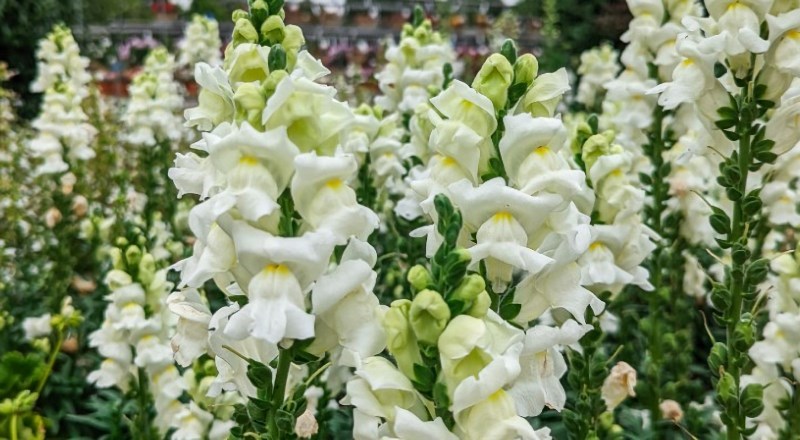Antirrhinum (Snapdragon) Rust and How to Fight the Fungus
Have you got a problem with antirrhinum rust? Don’t panic! We’re here to help you do everything you can to prevent the fungus from spreading.
Antirrhinum rust is a bothersome fungal infection that affects snapdragons. Plants deteriorate slowly, first exhibiting yellow rings and then small brown pustules on leaves.
Protecting your plant from the snapdragon rust fungus can be difficult as it is spread by spores on the wind. Originating from North America, antirrhinum rust was introduced to Europe during the past century. Antirrhinum Majus is the most affected variety, with growers claiming that some newer forms of Antirrhinum are resistant.
Antirrhinum rust is extremely damaging to plants and impossible to destroy once plants are infected.
What does Antirrhinum Rust Look Like?
Snapdragon rust grows within the tissue of the plants and takes a plant’s nutrients. Leaves slowly wither and lose firmness, taking on a ‘floppy’ appearance.
Initially, the fungus infects leaves and is detectable by the yellow rings that start to show on top of them. When the fungus worsens, the underside of leaves exhibit dark, bulbous spots.
When touched, the rust fungus powders on the fingers. Be cautious when touching it and ensure you don’t contaminate other antirrhinums. Wash your hands immediately to prevent it from spreading!

How do I get Rid of Snapdragon Rust?
It isn’t possible to get rid of antirrhinum rust once a plant is infected, but it is possible to take measures to prevent it from spreading.
For Early Infections
If you have caught the spread of the snapdragon fungus early enough, then you may be able to use anti-fungal products to prevent the rust problem from getting worse. We recommend spraying your snapdragon with an anti-fungus such as Bayer Provanto Fungus Fighter Plus.
For Snapdragons with Brown Spots
Once antirrhinum rust goes unchecked, it’s hard to stop it destroying your snapdragon. Eventually, brown spores will start to grow on the stems of the plant and it will droop, looking unhappy.
When your plant is exhibiting brown rust spots, it’s best to cut the stems down to the base, just above the soil. If it’s still warm enough and the plant is in season then it may grow again, and even bloom.
After the Summer Season and for Dead Plants
Once antirrhinum plants have been infected, there’s not much that can be done to save them. When summer is over, carefully dispose of dead or infected plants, keeping them away from other snapdragons. Antirrhinum rust can survive on decomposing plant matter from infected plants, so clear debris and try growing new plants next year!

What Are the Best Products for the Job?
Bayer Provanto Fungus Fighter Plus







